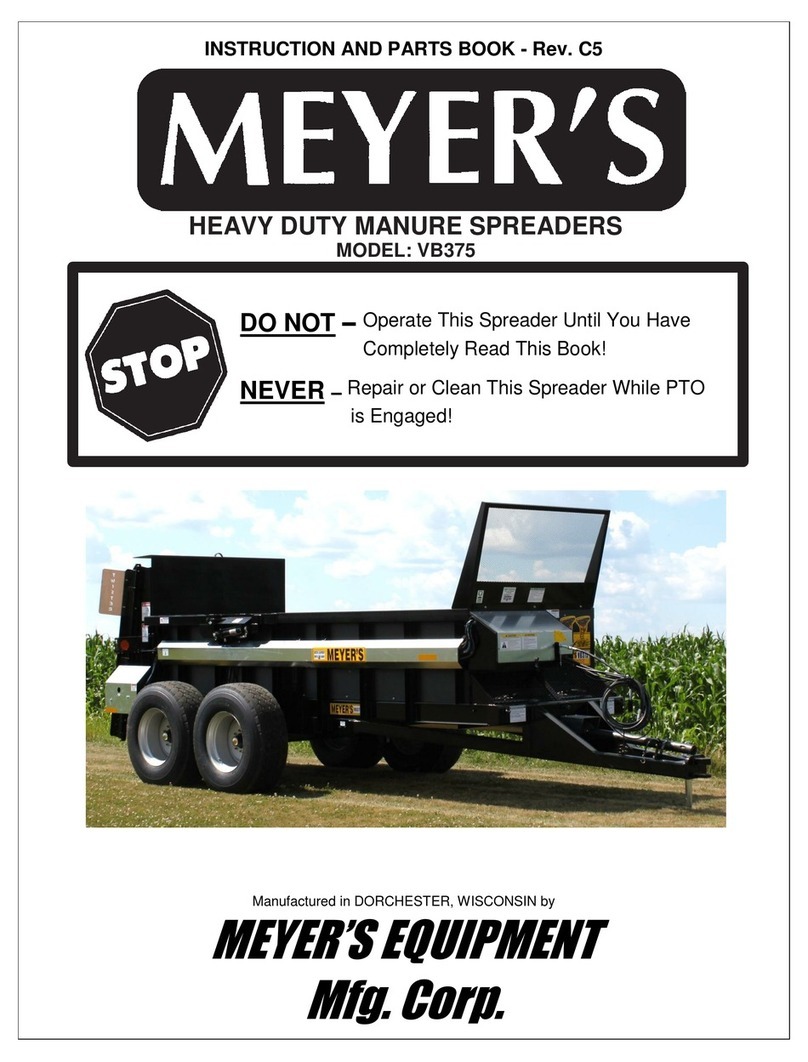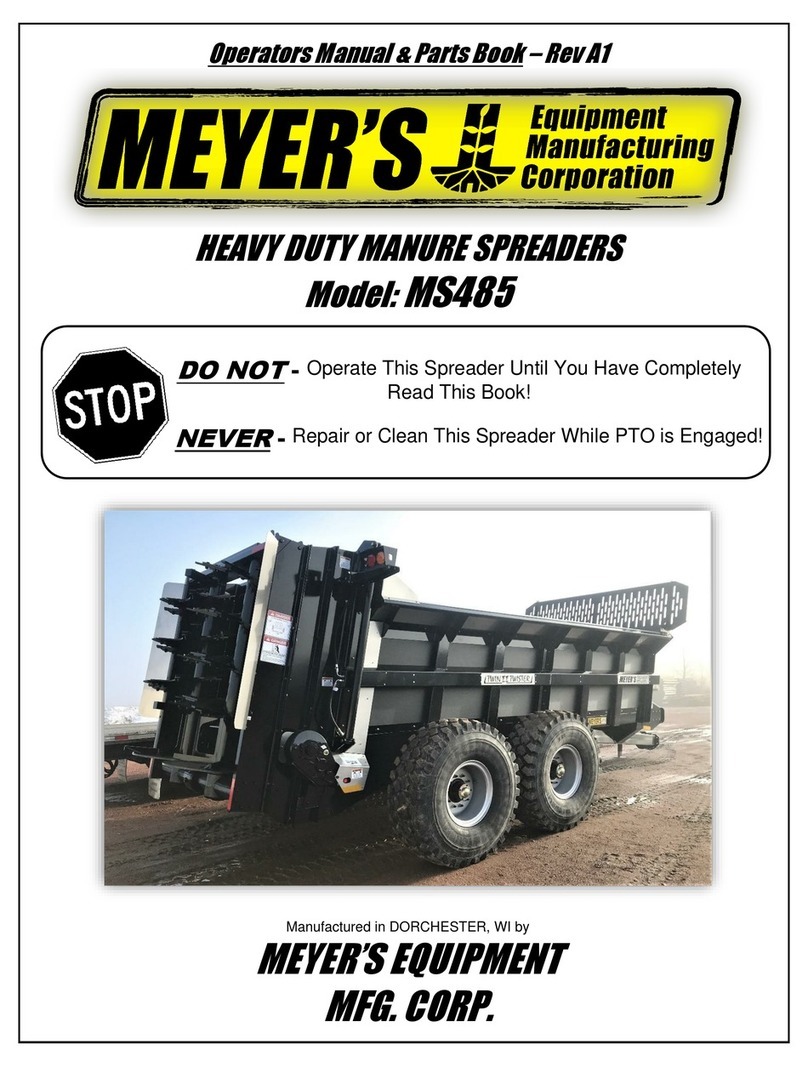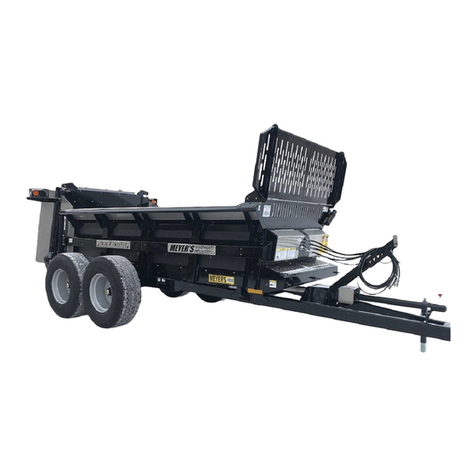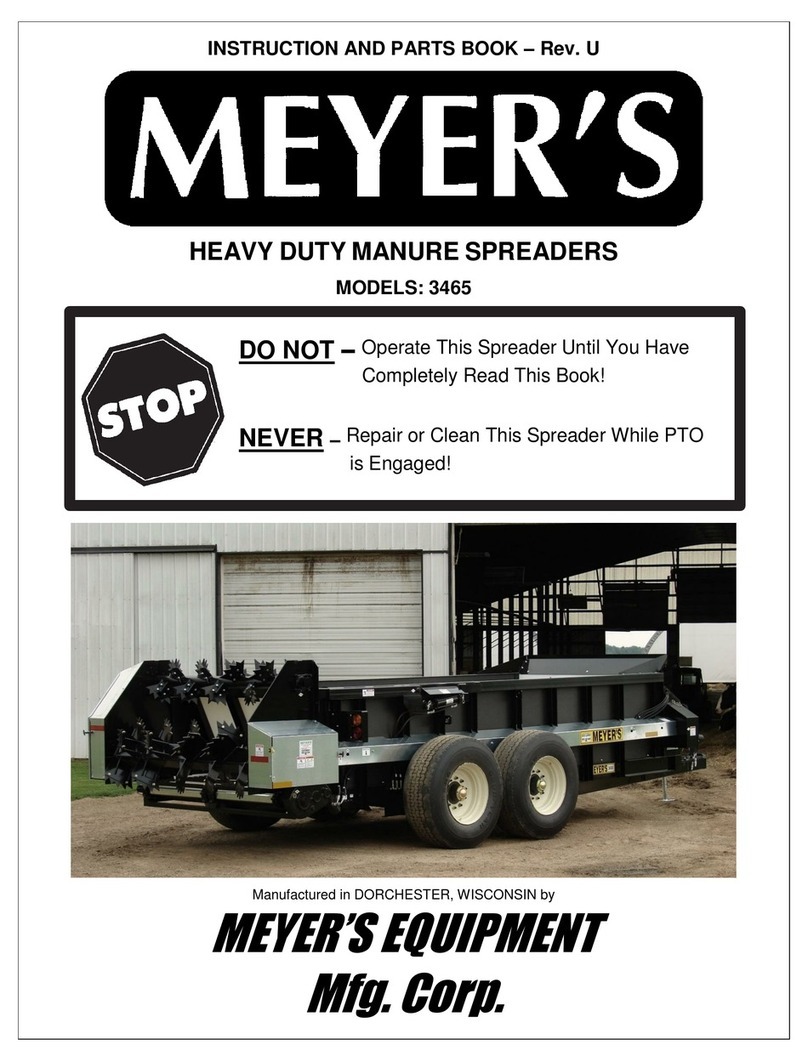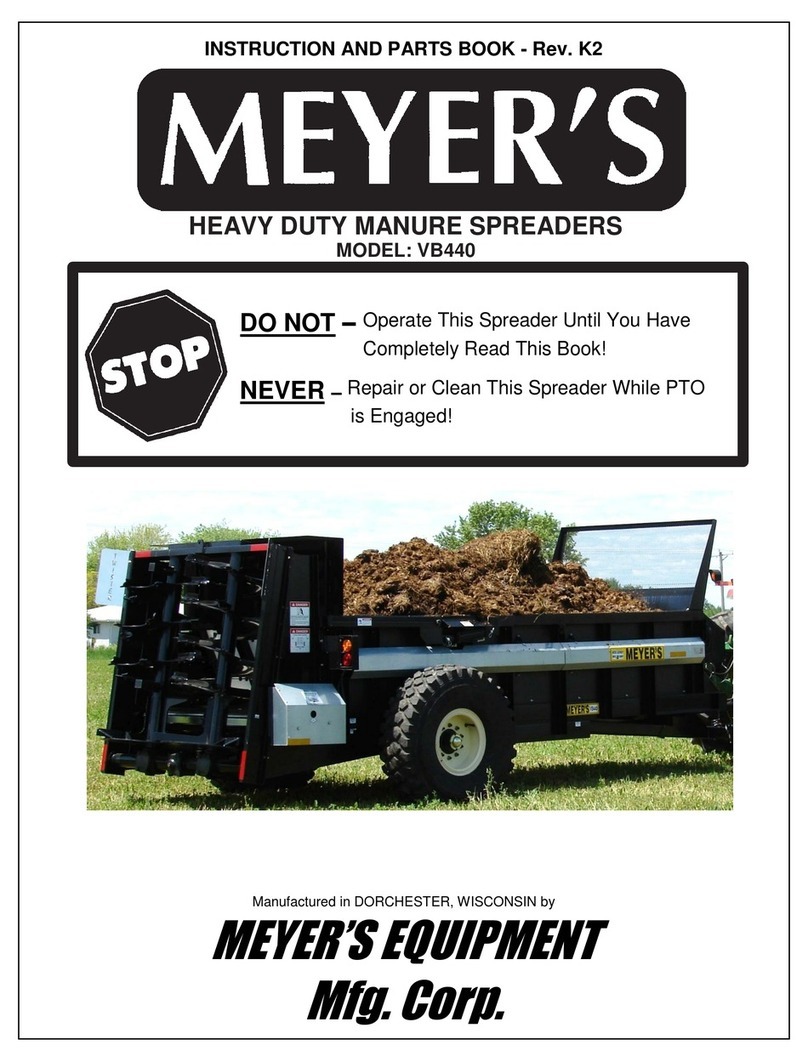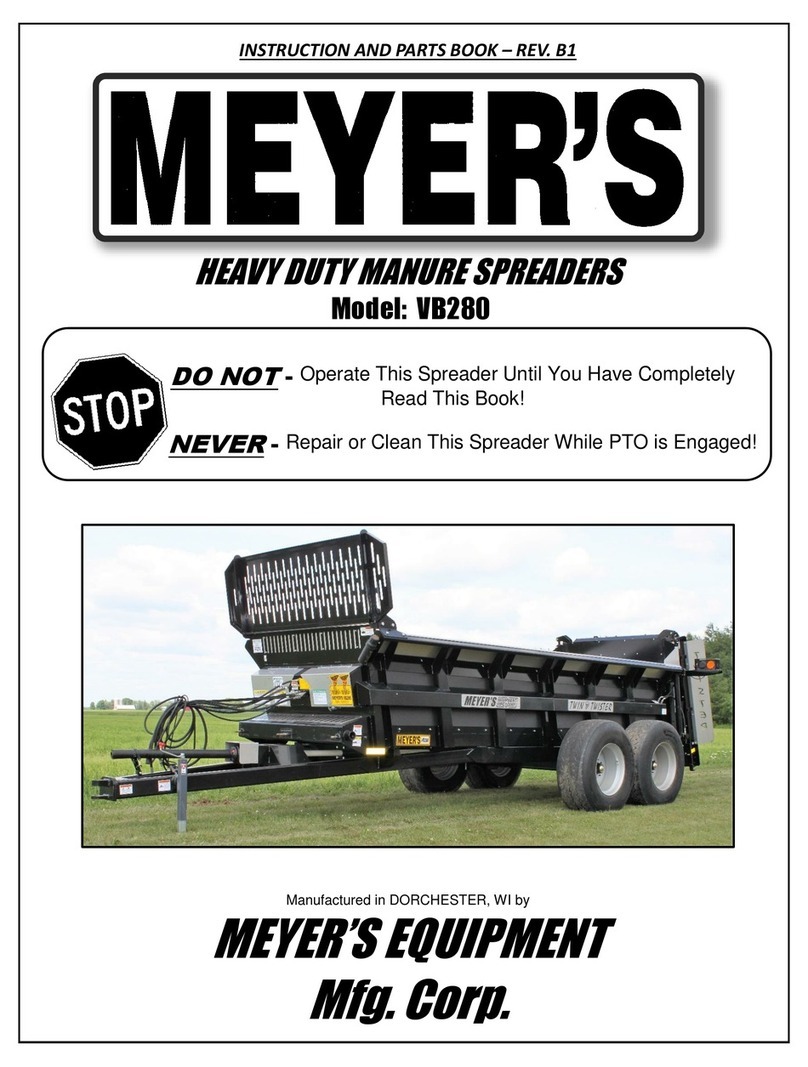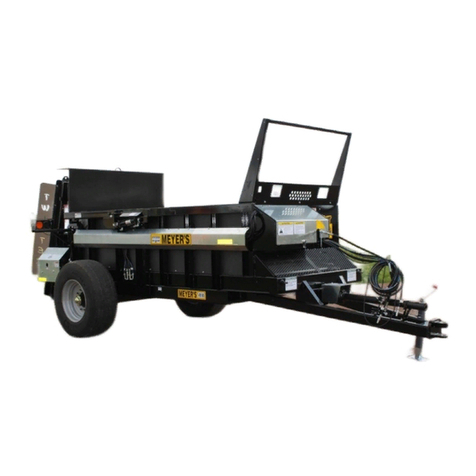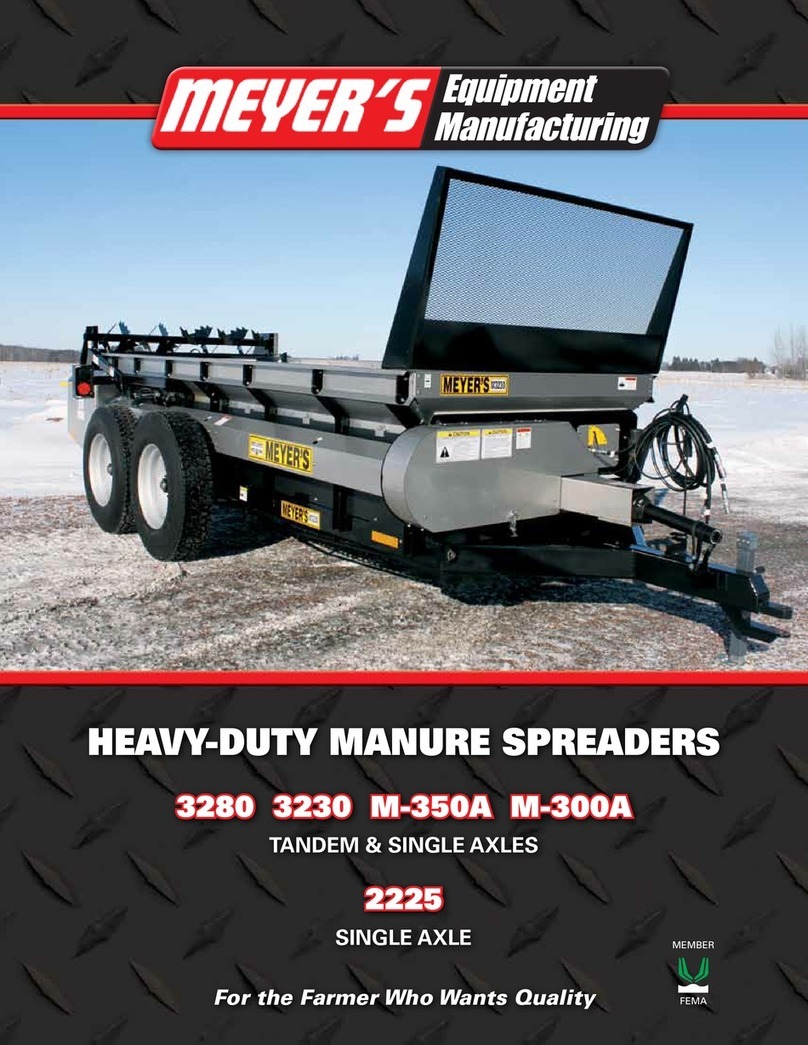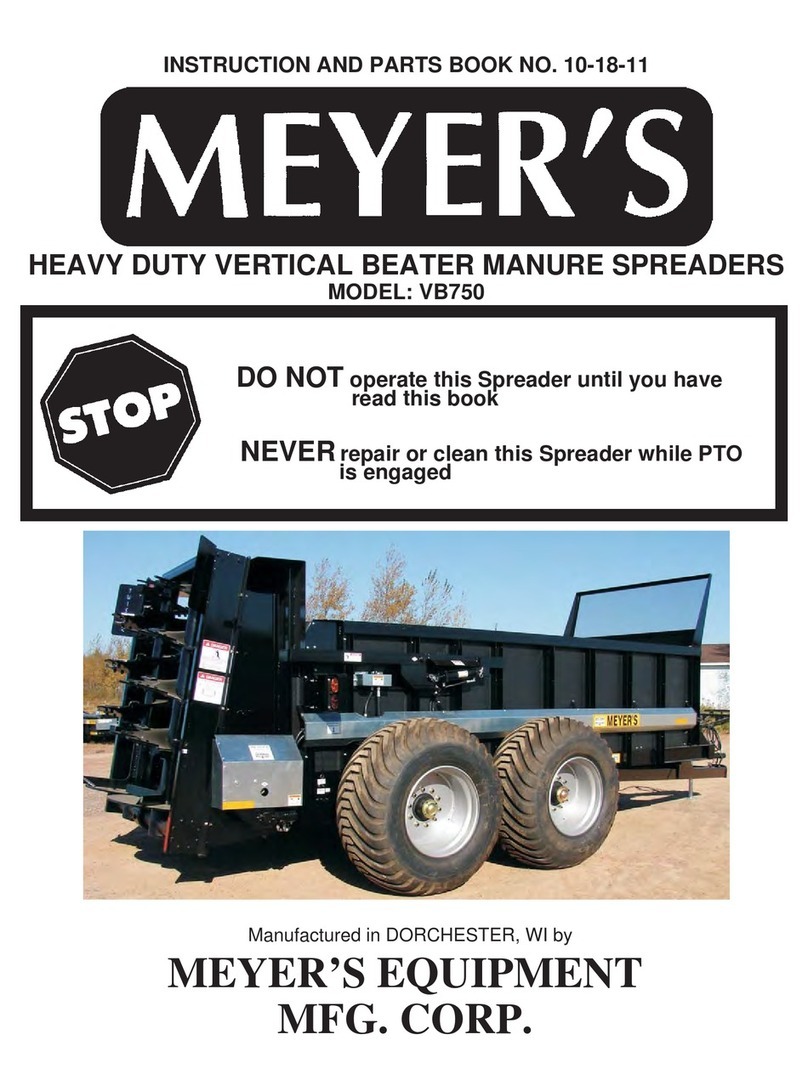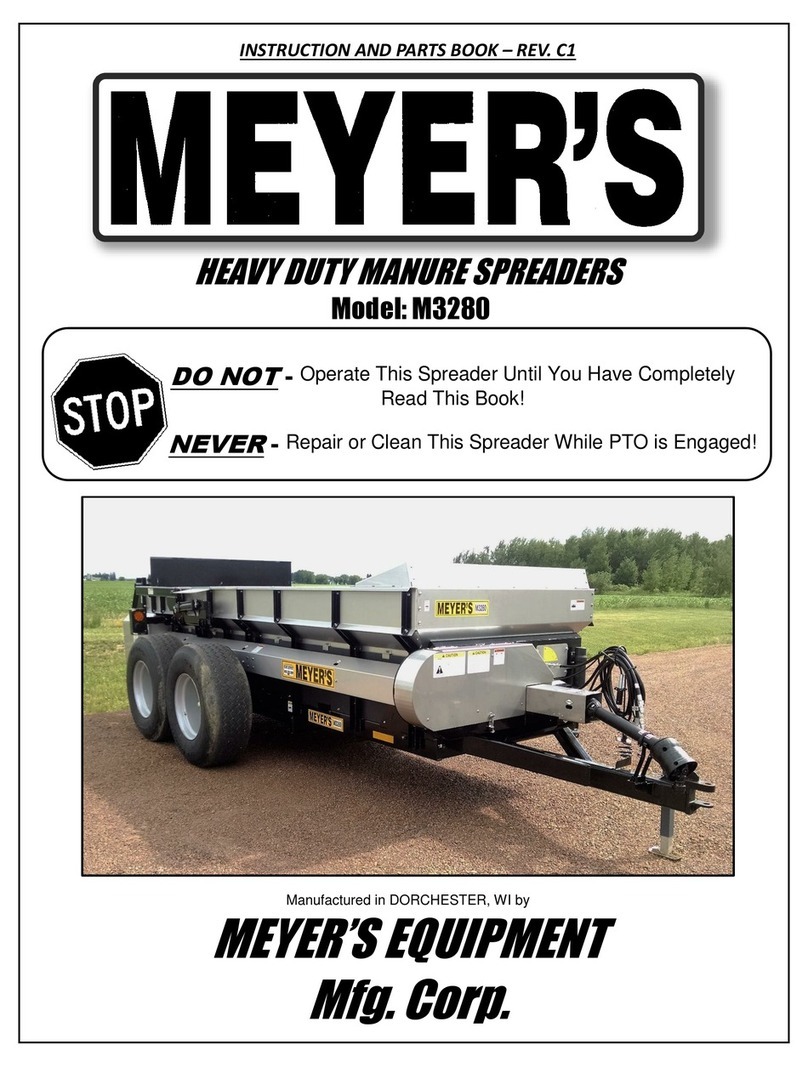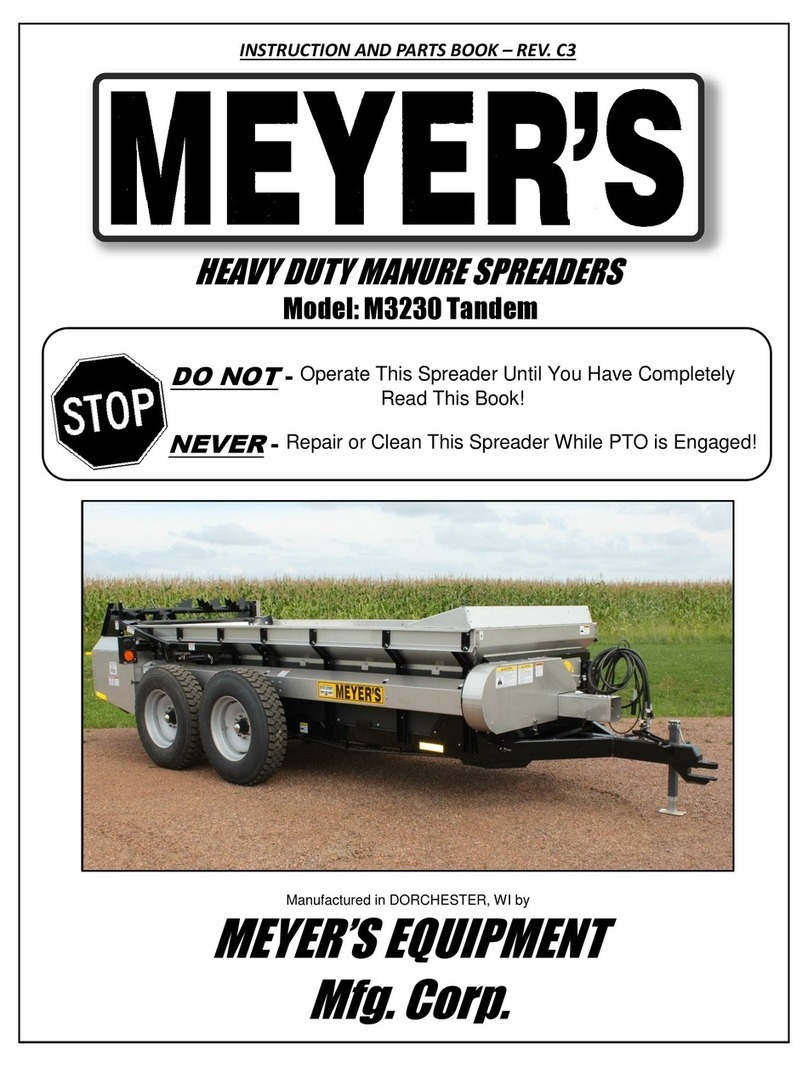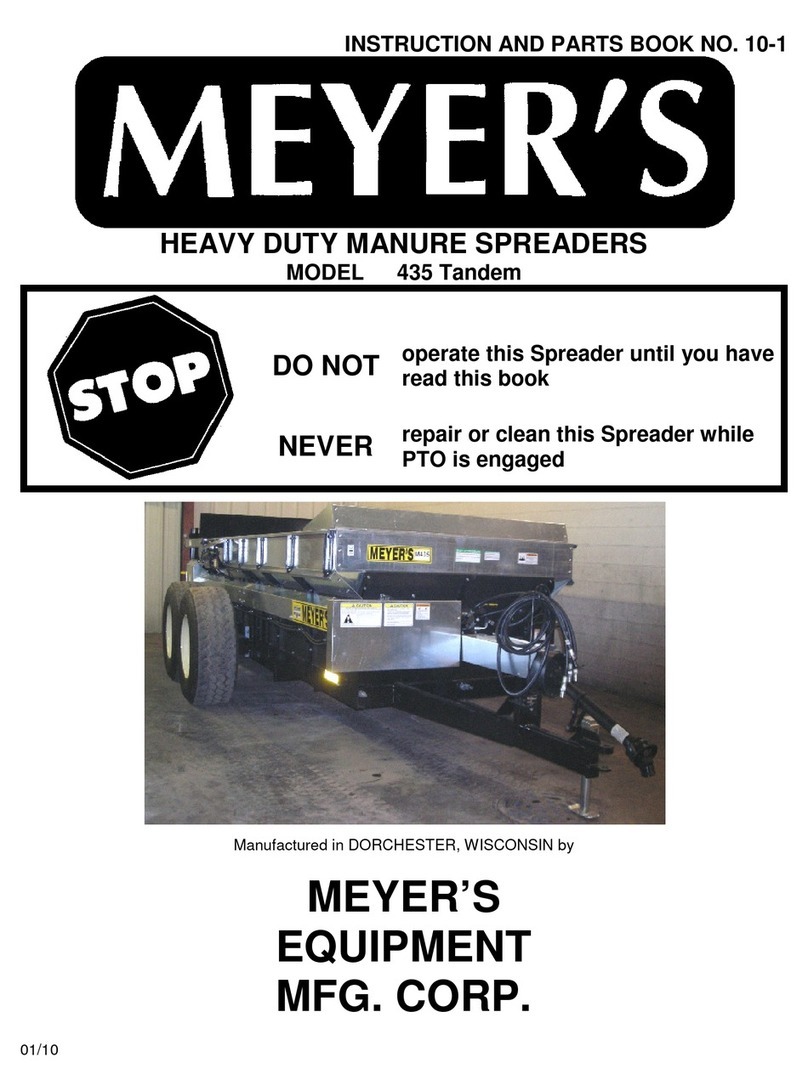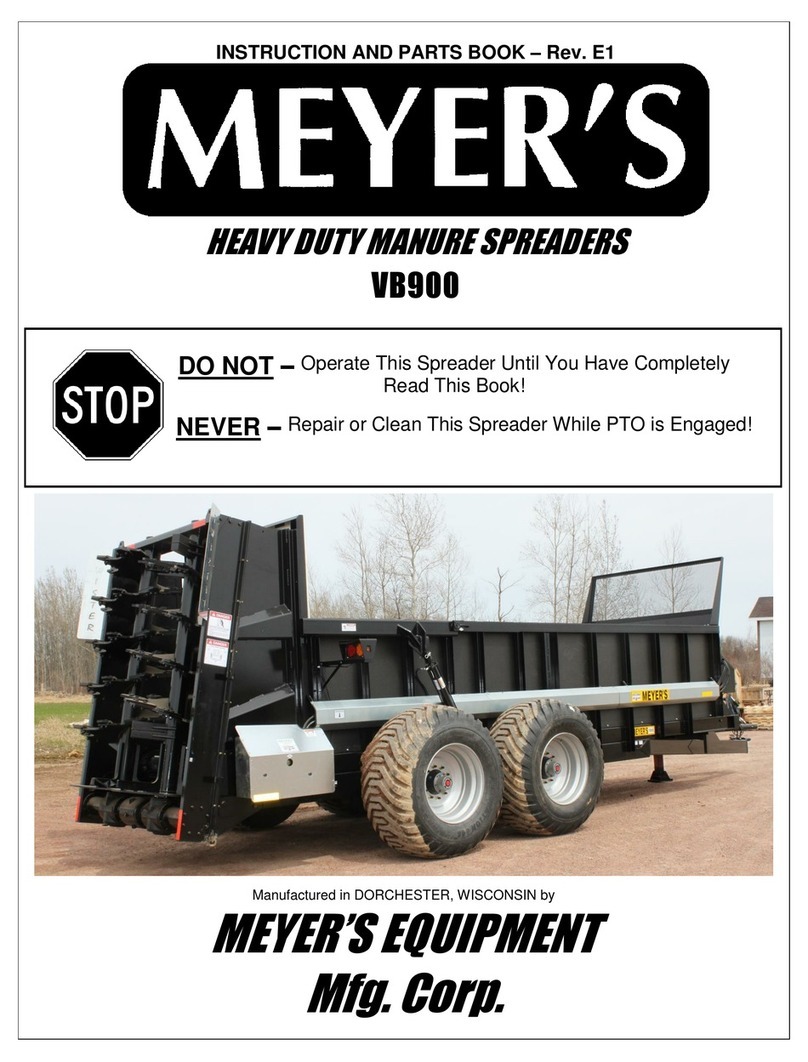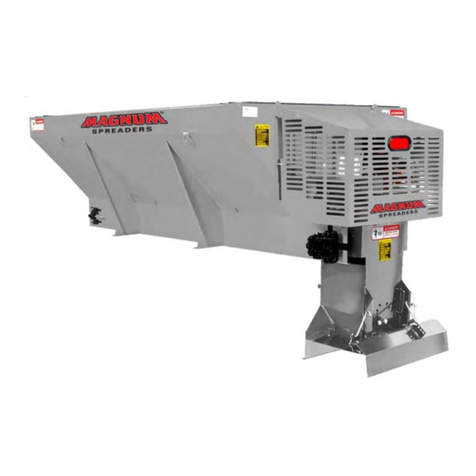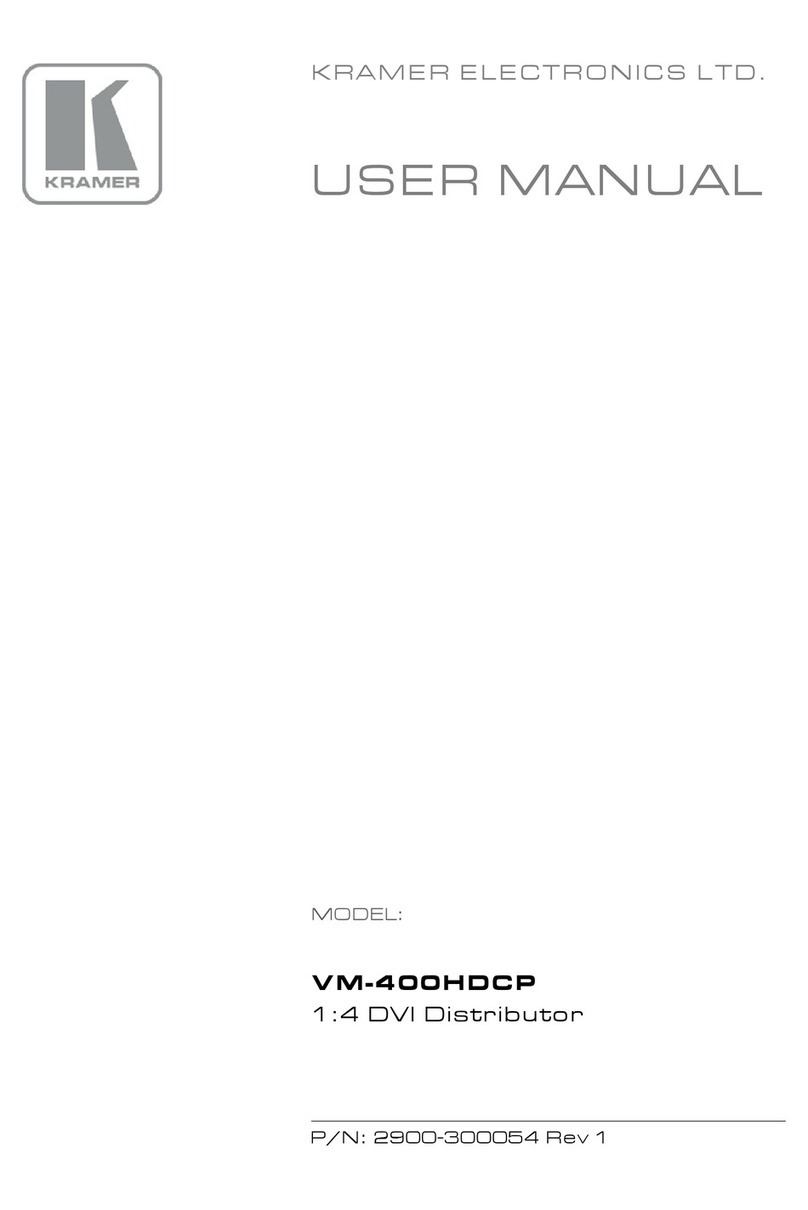
Page 3 MODEL: VB560
TABLE OF CONTENTS
INTRODUCTION ....................................................................................................................................................... 2
SAFETY..................................................................................................................................................................... 4
MANURE SPREADER SAFETY................................................................................................................................ 8
MANDATORY SAFETY SHUTDOWN PROCEDURE .............................................................................................. 9
PRE-OPERATION ................................................................................................................................................... 10
General.................................................................................................................................................................10
Tractor Hitch and PTO Requirements..................................................................................................................10
ADMA Recommendations:...................................................................................................................................10
Tractor Size Requirements...................................................................................................................................11
Tractor Towing Size Requirements......................................................................................................................11
Theory Of Operation.............................................................................................................................................11
Hydraulic System .................................................................................................................................................11
General.............................................................................................................................................................11
Converting A Spreader From Closed Center To Open Center............................................................................12
To Convert Standard Non Flow Controlled Closed Center System To Open Center......................................13
To Convert Optional On Board Flow Controlled Closed Center System To Open Center...............................13
Electric Control Installation for Optional On Board Flow Controlled System.......................................................14
Transporting .........................................................................................................................................................15
General.............................................................................................................................................................15
OPERATION............................................................................................................................................................ 16
Tractor Hookup.....................................................................................................................................................16
Loading.................................................................................................................................................................16
Unloading .............................................................................................................................................................17
Mandatory Safety Shutdown Procedure ..............................................................................................................17
MAINTENANCE, ADJUSTMENTS & LUBRICATION ............................................................................................. 18
Wheel And Tire Maintenance And Repair............................................................................................................18
Lock Ring Rim......................................................................................................................................................18
Rear Automatic Over Running Clutch..................................................................................................................18
Mandatory Safety Shutdown Procedure ..............................................................................................................18
Adjustments..........................................................................................................................................................19
Cleaning and Storage...........................................................................................................................................21
REPAIR PARTS....................................................................................................................................................... 22
Main Frame & Box Parts......................................................................................................................................22
Hydraulic End Gate & Related Parts....................................................................................................................24
Jack Assembly .....................................................................................................................................................26
End Gate Hydraulic Piping...................................................................................................................................28
Axles, Wheels, Spindles and Related Parts.........................................................................................................30
Side Drive Train....................................................................................................................................................32
Apron & Related Parts For Standard 67P11 Chain .............................................................................................34
Apron & Related Parts For Optional 667XH Pintle Chain....................................................................................36
Lube Bank ............................................................................................................................................................38
15mm Beater Head Assembly, Standard.............................................................................................................40
Vertical Beater Drive & Related Parts - Standard & Optional..............................................................................42
Apron Drive Gearbox............................................................................................................................................44
Removable CV Telescoping Universal Joint Assembly With Guard, Trailer To Tractor......................................46
35E Universal Joint , Telescoping Assembly w/ Guard - Rear With Overrunning Clutch....................................47
Standard Hydraulic Apron-Flow Control On Spreader.........................................................................................48
Optional Electric/Hydraulic Apron-Flow Control On Spreader.............................................................................50
Optional Tractor Lever Operated Hydraulic Apron...............................................................................................52
Standard Highway Lighting With Amber Side Light .............................................................................................54
Hydraulic Assembly - Electric Flow Control - Closed Center...............................................................................56
Hydraulic Assembly - Electric Flow Control - Open Center .................................................................................58
Hydraulic Assembly-No Electric Flow Control-Closed Center .............................................................................60
Hydraulic Assembly - No Electric Flow Control - Open Center............................................................................62
Weigh Scale .........................................................................................................................................................64
LIMITED WARRANTY STATEMENT ...................................................................................................................... 68

